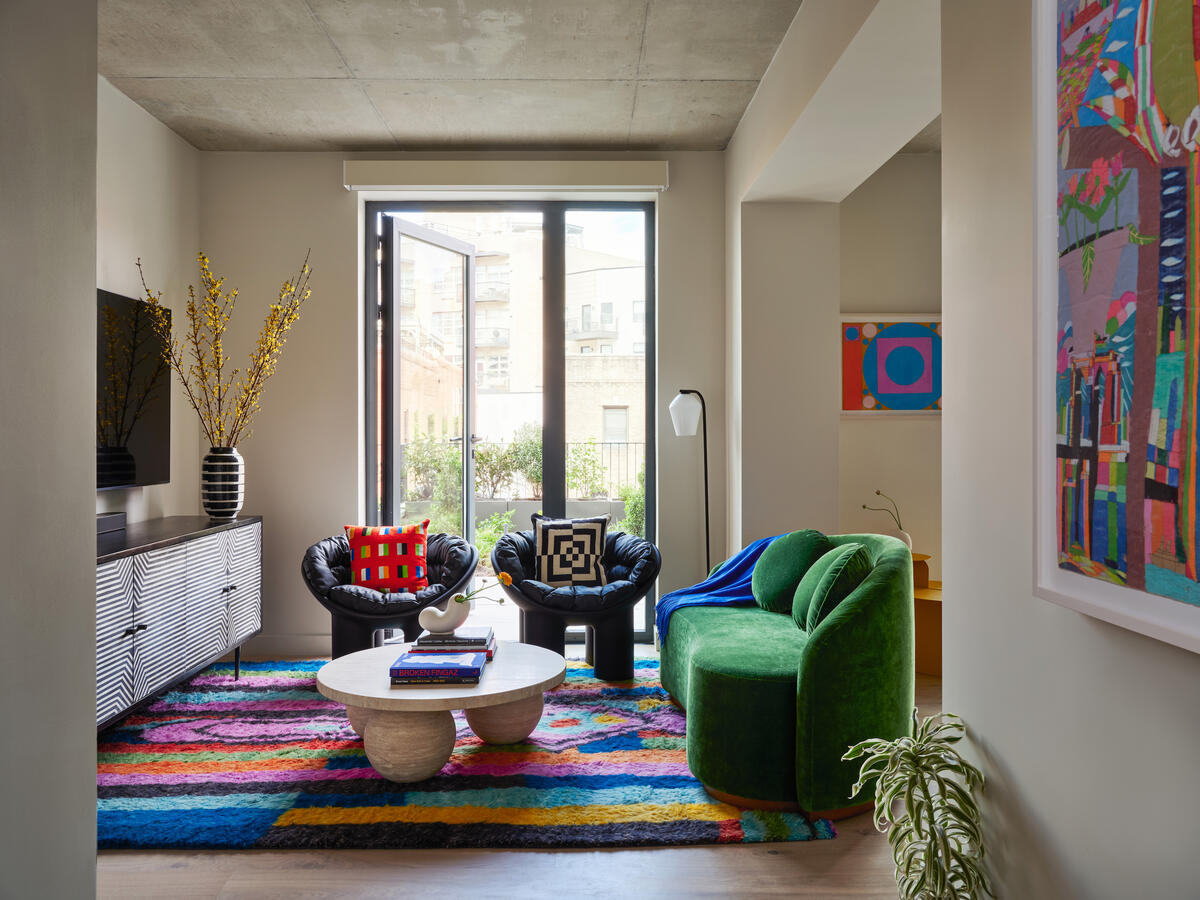It’s official: 2023 is done, dusted and in the record books. We spent the lingering days of December looking back on all that happened: the retail wins, the design trends, the stories that defined the industry. But that was last year! Now gifts have been opened, midnight toasts made, pine trees denuded of their shiny ornaments and dumped at the local Mulchfest. Yesterday, we circled back. Today, we look forward.
With their eye for trends and their nose for business, it should come as no surprise that design pros also have a sixth sense for predicting the future—or at least coming pretty dang close. Business of Home floated an open query about the new year to a five-star lineup of designers, architects, influencers, investors and vendors, and they delivered in spades with commentary that was thoughtful, detailed, sometimes cautionary, but ultimately optimistic. Let’s just say, to paraphrase Nina Simone: It’s a new dawn, it’s a new day, and we’re feeling … cozy!
HIGH-CLASS COZINESS, CURVY FURNITURE, TEXTURE TAKES HOLD
“Picture the vibe of 2024 like a cozy hug from your favorite sweater—rich harvest tones in furniture, classic florals popping up and walls painted in soothing shades, all coming together to create homes that feel like a quietly luxurious escape. Taking cues from the everlasting charm of a spot like New York’s Soho House, get ready for a shift toward interiors that capture the laid-back elegance of a countryside estate. It’s that feeling when your well-to-do parents leave you alone for the weekend—a mix of sophistication and comfort. This isn’t just about looks; it’s a whole mood that will spill into art, fabric, furniture and even hospitality, retail and social media. Let’s look forward to magic spaces that blend a touch of fancy with a whole lot of coziness for an atmosphere as chill as it is classy.” —Mikel Welch, designer and TV personality, New York
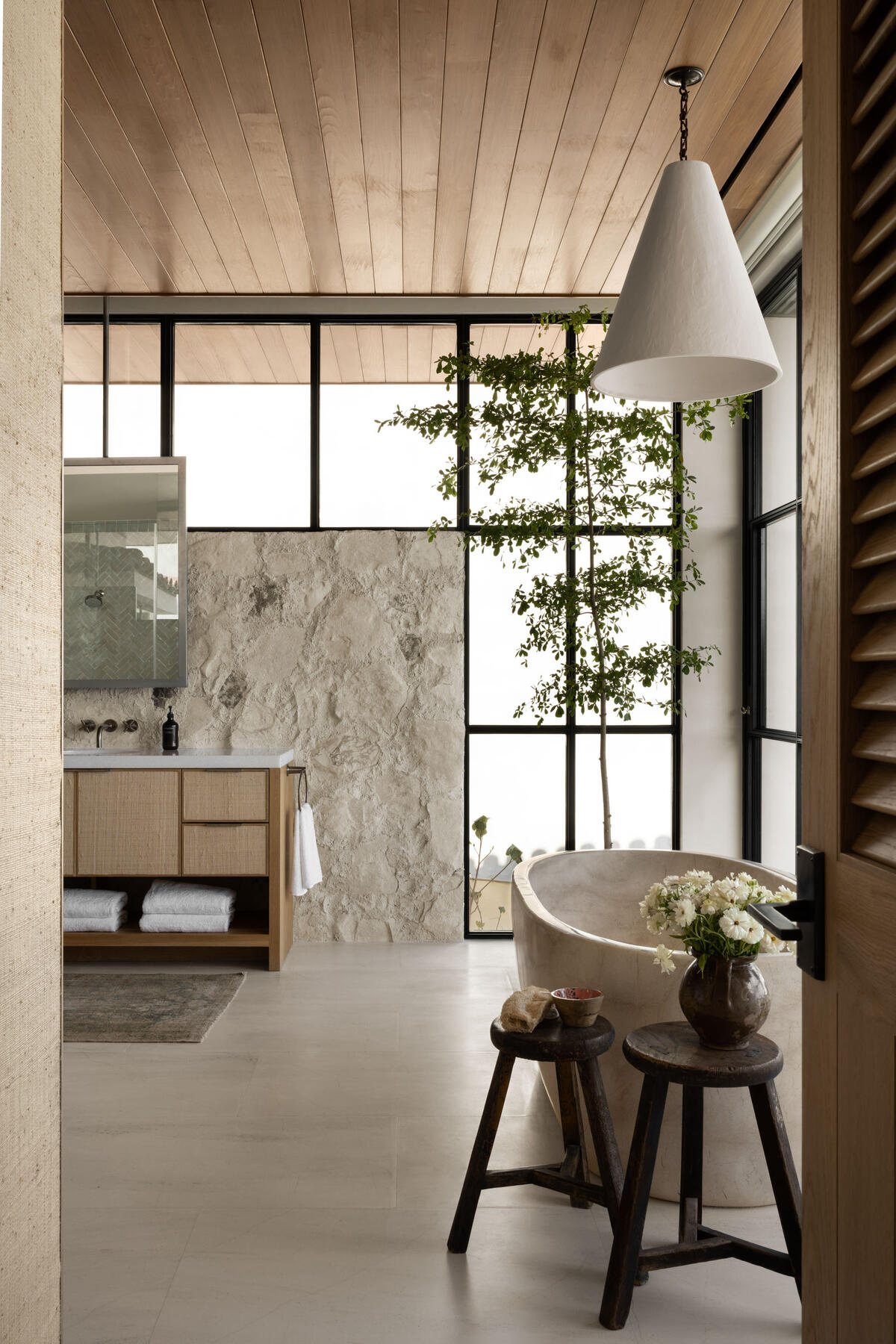
“The new year promises a tactile shift that will revolutionize interiors, art and fashion. Curved furniture, cabinetry, stonework and arched walls introduce movement and fluidity. Expect a blend of natural woods and bold colors for playful accents. Sustainable options will also take center stage, and spalike amenities and outdoor spaces will turn homes into tranquil sanctuaries. Prepare for a year of sensory indulgence, refined luxury and innovative design!” —Claudia Afshar, designer, Los Angeles
“I’m absolutely loving the beautiful coupling of natural materials like plaster and stone with sleek, luxurious elements like glass and straight lines. We [tapped into] the trend for the primary suite bathroom in our first international Studio McGee project, Cabo Dos Vistas in Cabo San Lucas, Mexico, where a modern steel-and-glass wall wraps around a stone wall and the vanity is made of oak cabinetry with grasscloth drawer fronts.” —Shea McGee, co-founder and creative director, Studio McGee, Salt Lake City
“For 2024, we’re leaning into neutral hues paired with touchable textures, proving that simple can make a statement. Rugs that mix high and low piles are one of the easiest ways to turn a floor into a focal point, offering a unique geometric pattern that evokes a sense of coziness and comfort.” —Ashley Stark Kenner, creative director, Stark, and founder, Ashley Stark Home, New York
ALL ABOUT THAT BROWN
“The embrace of brown is a continuation of the trend we’ve seen in recent years, shifting away from cooler gray interiors to a warmer palette of natural hues that deliver comforting, soothing schemes and an inherent warmth. The earthy yet refined essence of brown shades makes them the perfect backdrop to natural materials—including wicker, rattan, wood and stone—that are currently being incorporated into contemporary homes. Gone are the associations with dated 1970s drab or dull spaces. Browns are retaking their rightful place.” —Ruth Mottershead, creative director, Little Greene Paint & Paper, Greenwich, Connecticut
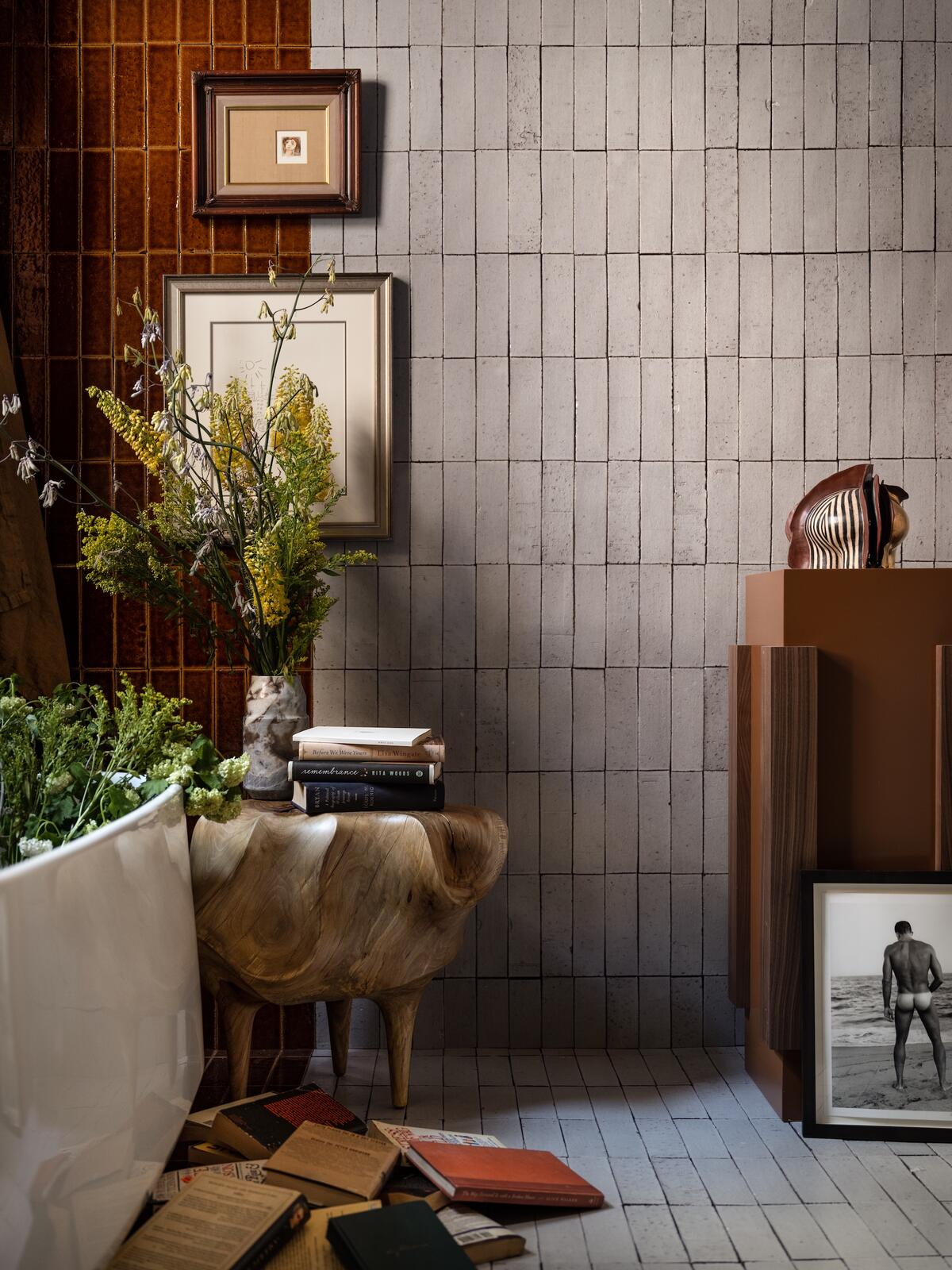
“Textured surfaces will be big this year. We’re seeing a rise in textural materials over prints with repeat—even mural wallpapers and scenery prints [are featuring] three-dimensional effects and finishing touches, be it threads, hand-painting or other materials. The color brown has also been staging a comeback, with warm neutral tones laying the foundation for its return and cold gray shades making a slow but steady exit. For me, introducing vintage midcentury modern pieces as accents in contemporary interiors will bring in the browns through wood tones.” —Ahmad AbouZanat, designer, Project AZ, New York
“The design industry is always several steps ahead of the general public. In 2024, all our efforts to bring in comfy neutrals have finally been absorbed and are here to stay. And by neutrals, I don’t just mean white and cream: It’s more of a relaxed palette, featuring mellow colors like light rust, olive green, warm coral and rich brown. I’ve also been seeing a shift with wood tones going a bit darker, from white oak into gorgeous linear grain walnut. Curved furnishings are making a comeback too.” —Christine Vroom, designer, Los Angeles
“We’re seeing a movement to warmer colors and more casual and accommodating interiors, with an emphasis on sustainable, natural projects. Moody spaces are back.” —Dwayne Bergmann, designer, Freestyle Interiors, Bonita Springs, Florida
“In the new year, there will be more emphasis on creating intimate spaces with softer lines, rustic textures and a European influence as more international companies find their way into the U.S. market.” —Faith Fix, designer, Freestyle Interiors, Bonita Springs, Florida
IMPERFECT, AUTHENTIC MATERIALS
“Designs and finishes will be determined from a holistic approach centered around wellness. With this shift, the integrity of materiality will become more influential in residential design, and we’ll see more natural stones with surface treatments, pure expression of materials and visually soothing textures. Designers will also incorporate materials with a story behind them, whether they are locally sourced, sustainable or natural elements, such as wood and clay. Vintage materials that embrace imperfection will be valued for their authentic and raw aesthetic and reputation for quality.” —Gray Davis, designer and co-founder, Meyer Davis, New York
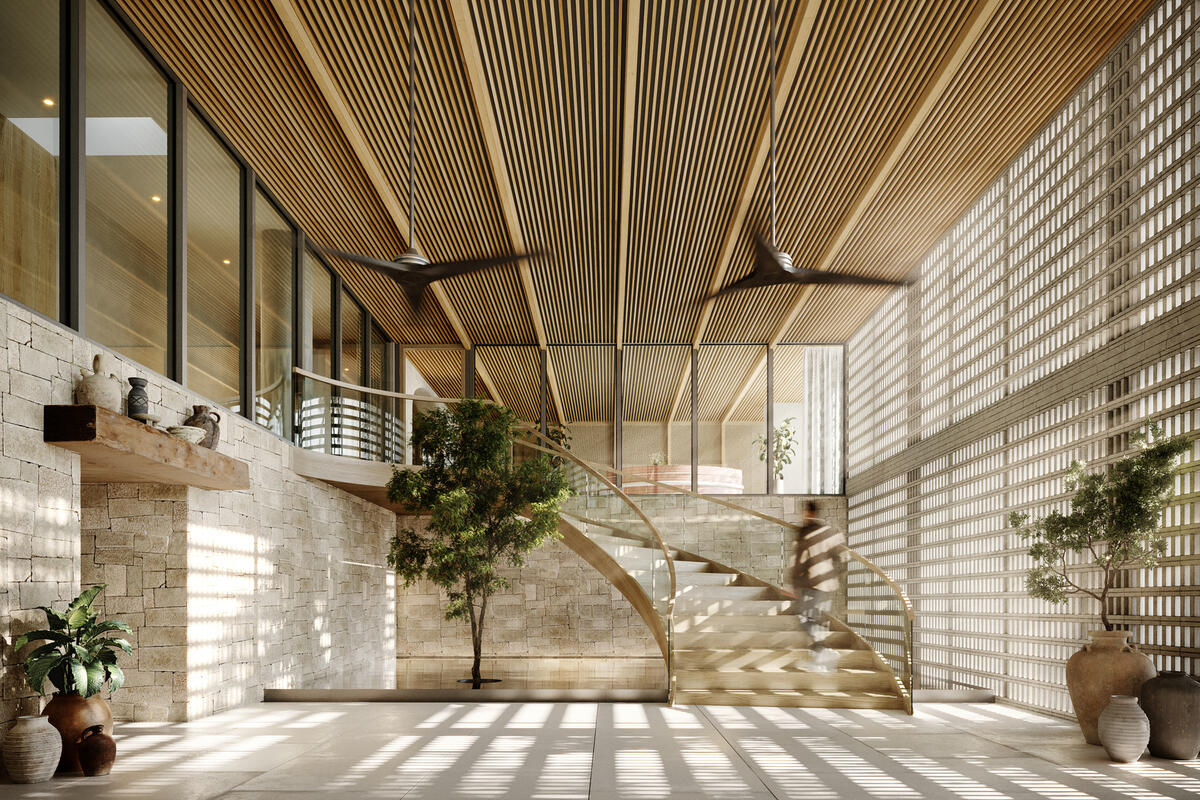
“Design elements characterized by flashiness or trend-chasing are inherently transient and destined for obsolescence. Harnessing the richness of local materials, weaving timeless patterns and shapes into innovative modern narratives, and promoting sustainability and wellness to foster richly unique experiences are the directions that align with our vision, and our clients’ priorities, for 2024.” —Amy Jakubowski, principal and managing director, Pierre-Yves Rochon, Chicago
CONNECTING THROUGH STORYTELLING
“Finding meaning behind objects and learning the stories of the people who create and inhabit beautiful spaces will be a necessary element in mindful design work.” —Jean Lin, founder and creative director, Colony, New York
“We feel that clients will be looking toward works that have strong ties to the artists’ and designers’ cultural heritage—incorporating the aesthetics of their country of origin but giving the works a contemporary vibe.” —Sherri Apter Wexler and Lewis Wexler, Wexler Gallery, Philadelphia and New York
“Art and design will continue to catalyze Black diasporic futures through materials, processes and storytelling. In the making, the separation between art, craft and design will continue to be blurred, and the purpose of the object will be central to the experience of the work—all necessary steps to creating inclusive design dialogues.” —Malene Barnett, artist, activist and founder, Black Artists + Designers Guild, New York
“I believe the future is deeply rooted in storytelling, in both my work and the wider design world. Whether it’s fabric, furniture or an entire room, every piece tells a tale. It’s about creating a narrative that resonates with the people who live in and interact with these spaces, transforming design from mere aesthetics to something much more personal and profound. I also see a growing emphasis on blending tradition with innovation. This isn’t about reverting to old styles but reinterpreting the traditional in a fresh, relevant and luxurious way—honoring the past while moving forward.” —Melinda Marquardt, textile designer, The Vale London
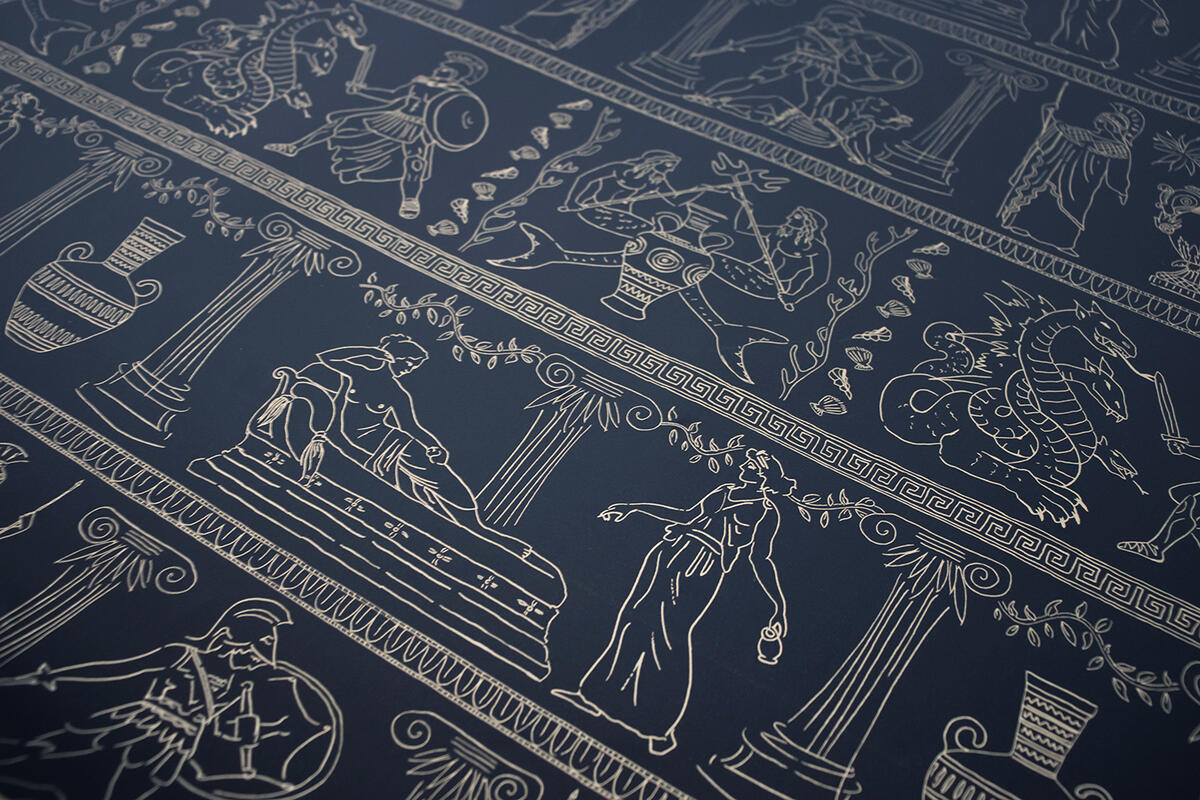
INNOVATIVE ARTISANS, AI CHANGES THE GAME
“2024 is going to be the year of the artisan. Whether working in textiles or furnishings, manufacturers of all sizes and kinds are celebrating the hand of the artist and bespoke craftsmanship more than ever. At the same time, makers are pushing the bounds of creativity when it comes to sourcing materials for furniture and lighting, in particular—I am thinking of the pieces that excited us most at this past High Point Market, like the eggshell lighting from Arteriors, unique stone-covered pieces at Bernhardt, and cork everywhere. In art, we’re seeing more of a focus on textile-inspired works. And last but not least: If you don’t yet own a chic rechargeable lamp, I bet you will before the year is out, as these pieces get more luxe in their design and feel.” —Steele Marcoux, editor in chief, Veranda, New York
“I feel like the Miss Cleo of future interior design trends! All I’m missing is a head wrap and a rotary phone. In 2024, we’ll witness a fusion of traditional craftsmanship with cutting-edge technology, resulting in stunning, immersive spaces that transcend our wildest imagination. Designers who fear nothing will push boundaries, blurring the lines between functionality and art, with bold and expressive pieces becoming focal points. Furniture will become much more of an art form in itself, through designs that challenge convention. Fabrics will embrace performance and sustainability. Virtual reality and AI will also play a significant role, enabling people to visualize and explore spaces before they even exist. The only rule in this interior design game is to keep creating and innovating.” —NeKeia McSwain, designer, president of Black Interior Designers Inc., Denver
ANTIQUES, EMBELLISHMENTS AND THE NEW TRADITIONALISM
“This year will bring a simple sensibility to everyday elegance, a thoughtful approach to traditional style, and a lovely mix of old and new. Antiques are making a major comeback. Goodbye to stark white and hello to warmth—I’m craving everything latte and cream! Pretty is still as relevant, with romantic florals, classic stripes and timeless plaids. And let’s not forget a little feminine touch: the art of the bow, tassel, frill or fringe. Trimmings and tailored details are bigger and better than ever.” —Caitlin Wilson, designer, Dallas
“The rules of embellishment are being rewritten as increasingly classical elements are used in nontraditional ways—brush fringe and cord on drapery, for instance, and tassel fringe on upholstery. Even modern design is incorporating often unexpected classical elements.” —Michael Cohen, president, Samuel & Sons, New York
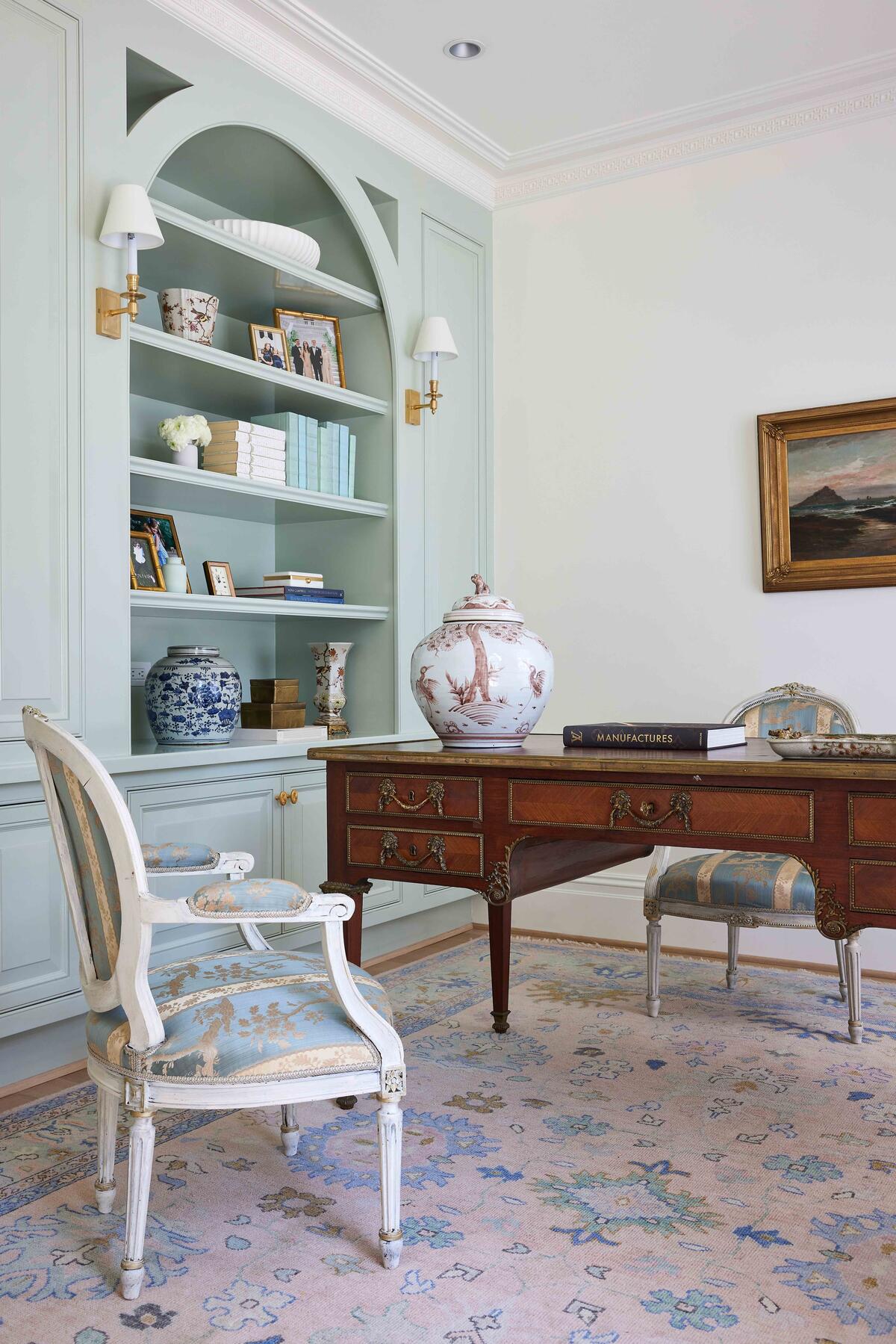
“The allure of antiques lies in their ability to tell stories. Each piece carries a unique history and timeless elegance that modern furnishings strive to replicate. In a world dominated by fleeting trends and mass-produced items, antiques stand out for their craftsmanship and enduring appeal. They bring warmth, personality and sophistication to our homes, creating a deeply individual and inviting atmosphere. Moreover, as we become more conscious of our environmental impact, antiques offer a sustainable choice. By investing in them, we reduce waste and conserve resources. Each repurposed antique is a step toward a more environmentally friendly approach to decorating that aligns perfectly with the global emphasis on responsible consumption.” —Jake Baer, CEO, Newel Antiques, New York
“How do we successfully manage our businesses, lead in our industry and live fulfilling lives amid seemingly constant change? Time efficiency and discipline are key, whether that means adopting AI-based solutions as they come online or forcing yourself to shut your laptop and spend more quality time with your family (or yourself) in order to be a happier human and a more inspired creative. Time is the ultimate luxury these days, and it has never come at a higher premium. I hope we can become better than ever at using it well. It may seem counterintuitive, but my interest in antiques relates to this point of view. As I posit in my book The New Antiquarians, a younger generation of collectors is reviving interest in historic art, antiques and vintage design, a wave I think will continue to grow. Is collecting or specifying antiques an efficient activity on paper? No. But it’s like replacing simple carbs with complex ones. The process of sourcing antiques is rewarding in itself, and the result is a lasting, inherently sustainable interior that is, perhaps ironically, future-proof. It all boils down to thinking holistically and being wise about how we use our time and resources.” —Michael Diaz-Griffith, executive director and COO, Design Leadership Network, New York
A PIVOTAL MOMENT FOR THE MARKET
“Interior design is an adjunct of the bigger real estate economy. As we see interest rate readjustments and the stabilization of inflation, we’ll finally be through the worst of the last four years of survival mode and ready to launch. I think the real estate market is going to open up in 2025, so our company is using 2024 to gear up for that recovery. We’ll be proceeding with caution but making investments and putting into action plans that have been slow-marched up until now. In the ‘ready, set, grow’ analogy, 2024 is still the ‘set’ stage, putting the pieces in place—new leases, new permits, revamped websites and brick-and-mortar—which will continue to have relevance. Home as sanctuary will continue to be at the forefront of our priorities. We’ll see a move away from so much travel and hospitality back to saving money, with a focus on wellness and sustainability and a big emphasis on indoor-outdoor. Social media will continue capturing people’s imagination. And with AI, we’ll see a lot more tools to help people visualize and design their environments.” —Peter Dunham, designer, founder of Hollywood at Home, Los Angeles
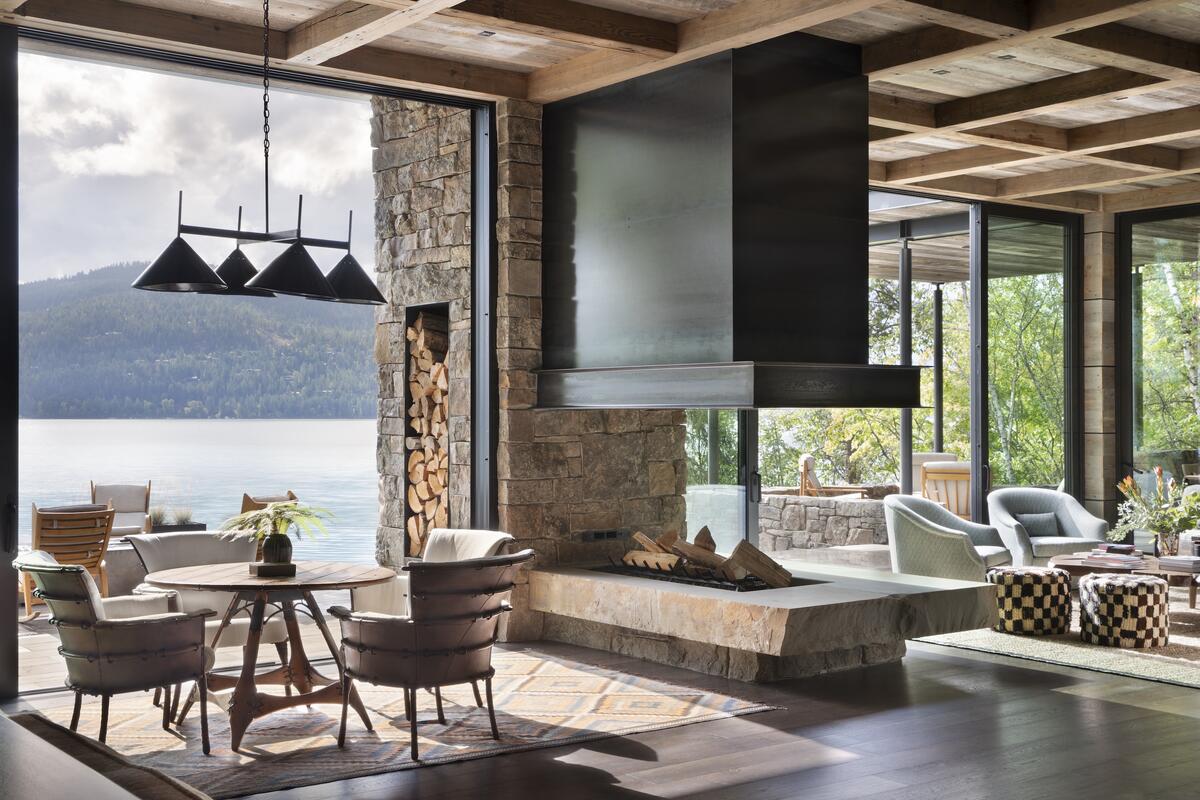
“As M&A specialists, we are looking forward to 2024 after a year of disruptions and high-profile bankruptcies. We are cautiously optimistic, as we are beginning to see stability in pricing and improving customer demand, which bodes well for business performance and M&A activity. We expect to see the banking system gain some confidence as interest rates stabilize and perhaps even drop. And with the U.S. housing market being up to 6.5 million homes short of demand, we will eventually see strong new home construction, which will lead to stronger demand for furniture. The wild cards will be geopolitical concerns—namely, the wars in Ukraine and the Middle East—as well as the turmoil that is ever present in a U.S. election year. But we remain positive, adhering to the Warren Buffett line to never bet against America!” —Stuart Stump Mullens, partner, Stump & Company, Charlotte, North Carolina
“We are living in uncertain times. At Vanguard, we are cautiously optimistic, planning for success and putting in place the products and policies to capitalize on what we believe will be a growth year for us. That said, we believe 2024 will be [experienced] differently between the affluent and the middle class. On one hand, the affluent segment we target should have a good year: Corporate profits and bonuses will peak, GDP is growing, the stock market will likely hit new highs, inflation will be checked—and while we don’t expect interest rates to decrease significantly, it doesn’t matter as much to people who buy with cash. On the other hand, we predict a tough year for middle-class consumers. Credit card debt is at an all-time high, interest rates and inflated housing prices are keeping people from buying new homes and eating into their discretionary income, and credit will tighten. In the middle market, furnishings will likely be price-driven.
Channels of distribution will continue to evolve. Independent dealers that have not found their niche will be challenged. Lifestyle stores will conclude that they can’t be everything to everyone. From a style perspective, expect to see rounder, softer, plusher and more organic and feminine shapes. At the high end, furniture is a luxury of enduring value. Like all luxury, it is as much about the purchase experience as it is about function. Our customers want their belongings to be a reflection of their identity. We pride ourselves on our ability to customize nearly everything we make, and we depend heavily on design professionals to guide customers. As their needs change, so will we.” —Andy Bray, president and CEO, Vanguard Furniture, Hickory, North Carolina
“As investors in the furniture and design space, we are looking forward to a return to growth for the industry. Both negative and positive reasons inform this outlook. The negative is that the fear of an economic downturn, which has deterred consumer spending on large-ticket household items, is getting long in the tooth. After two years of worry, households are becoming bored of being scared. They’ve also satiated their appetite for restaurants and travel. The positive is the abundance of new product hitting the market this year. Throughout 2023, we noticed teams of all sizes hard at work crafting new pieces. As those hit the floors, we hope their effect will be to drive renewed excitement and interest.” —James O’Brien, owner, Great Ocean Road Advisors, New York
DESIGNERS EMBRACE THEIR ENTREPRENEURIAL ERA
“Most creatives are collaborative by nature, and I’ve been seeing a lot more designer joint ventures, whether it’s forming buying groups, leasing real estate, or building alliances that seek to solve industry problems. I also see the continuing evolution of what a design business can be beyond the traditional services model. I’ve worked with clients who are also developing real estate, designer-focused software, consumer digital products, branded travel experiences and artisanal capsule collections, to name a few. The possibilities are endless, and that’s exciting—especially if you want a long career. I also think we’ve crossed the tipping point (thankfully) in terms of why it’s important to consider people and the planet when designing interiors. The majority of millennials are willing to pay more for sustainable products. In that demographic, it’s not even a ‘green’ conversation anymore; it’s in their DNA.” —Kim Kuhteubl, business coach, Me By Design, Los Angeles
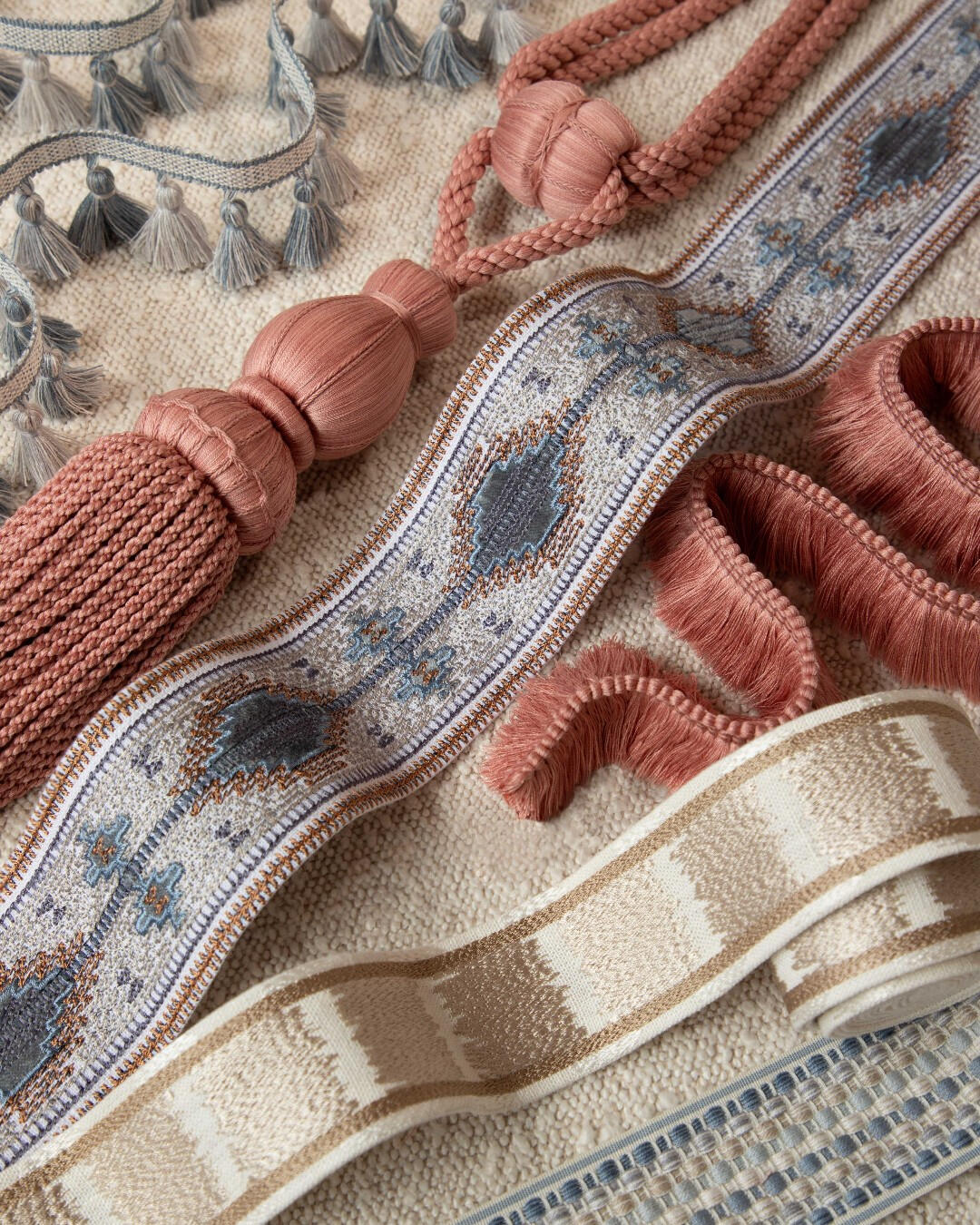
“This year, designers will want to move their fee emphasis to service—it’s less about product than how it’s placed in the context of the design. Manufacturers that aren’t yet heavily invested in the internet, and still protecting the trade, are moving to direct-to-consumer, so designers will need to resource more creatively and seek out more original and custom-made elements to build greater value and exclusivity. Relationship-building with profit partners including builders, architects and real estate agents is another area of focus. Adding strategic marketing engines to a practice is essential. Social media is one such relationship-building tool. But designers don’t need to be on every platform: It’s better to have a robust and engaged profile where your ideal clients will find you than try to be everywhere and not do it well. Designers with a clear and strong point of view often grow faster and climb higher than those attempting to please everyone. When clients know what you stand for, they know if you’re a fit for them. We are in both the digital and image age: The quality of your visuals will influence your success. We are also in the age of overwhelm. Less truly is more, and curating what you present on social media as well as your website will attract higher-quality clients.” —Melissa Galt, interior design business coach, Scottsdale, Arizona
“Events and entertaining have become the new currency of the design business. The opportunity is to create your own universe and extend true inspiration and hospitality. We’re seeing a shift toward more private events, but select fairs will remain part of the cultural conversation. We’re expecting that Copenhagen’s 3daysofdesign event will grow in importance for its focus on quality. At the same time, collectible furniture fairs will become more important as weird returns to the scene. After a few years where neutral colors reigned, palettes will be more complex and riskier. The game now is to truly surprise people. Thrilled for that!” —Rebecca Goldberg-Brodsky, communications strategist and co-founder, Dada Goldberg, New York
“Maybe it is just my hope, but I do think that 2024 will bring into focus for all designers what the power of abundance and an abundant mindset can do for both their businesses and their designs.” —Sean Low, business coach and founder, The Business of Being Creative, New York
HOTELS ARE THE NEW OFFICE AND HOMES ARE EVERYTHING
“Hotels will become an extension of the workplace, offering the comfort of working from home with the convenience of ordering a cappuccino. Digital nomads are looking to reconnect, so hospitality designers are adapting by creating multifunctional spaces suitable for working, relaxing and socializing.” —Bethany Gale, interiors design director, Stonehill Taylor, New York
“In recognizing the importance of maintaining a clear boundary between work and personal life, the office of 2024 is a haven that allows individuals to cultivate a healthier work-life balance. I envision the future of the office as a radical new building designed for people to grow their life and career, acquiring a sense of great purpose as well as satisfaction and joy. This led to my firm’s development of the WorkResort, an aspirational building [where] spaces are designed based on satisfying employees’ needs rather than on hierarchies or professional tasks. Inside, an introvert will finally find the perfectly undisturbed spot to work, while the extrovert who prefers exchanging ideas spontaneously will gravitate to the communal areas. This concept delivers environments that provide dedicated space for productivity and creativity not always possible working from home, freeing up the home to become a private place to reboot and spend time with family and loved ones.” —Matthias Hollwich, principal architect and founder, HWKN, New York
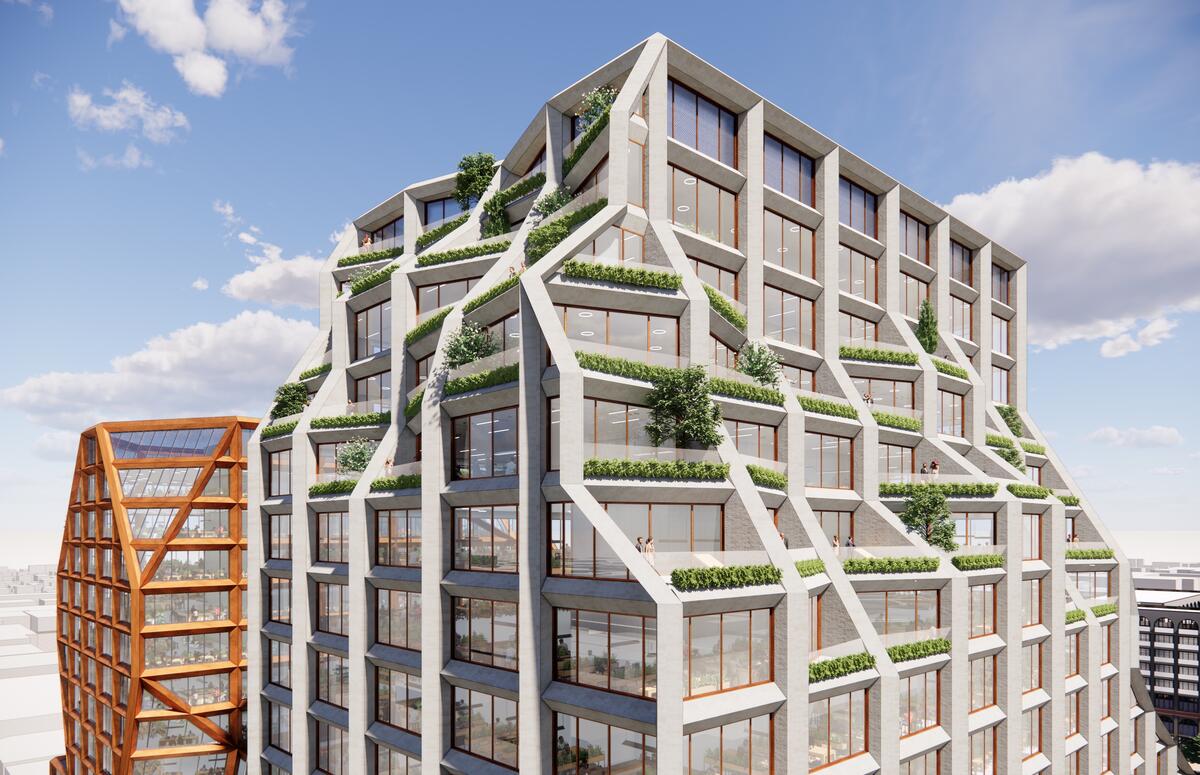
“The past few years have taught us that our spaces need to have more than one purpose. Design should be driven by experiences, and architecture should be multifunctional, blurring the lines between activities. We should be able to shop where we dine, entertain where we live, relax where we work, etc.” —Eran Chen, founder and executive design director, ODA, New York
RANGE HOODS MAKE A STATEMENT, GAS STOVES ARE OVER
“We anticipate a surge in bold color choices for cabinetry and tile—think rich earth tones, smoky blues, vibrant reds, earthy greens and luxurious purples injecting a fresh, dynamic energy into the heart of your home. Elevating your kitchen or bath ambiance with the allure of textured or geometric-patterned tile seems to be on the rise as well. Homeowners are also beginning to focus more on wellness and stress reduction through holistic, spalike bathrooms, transforming them into a calming oasis with steam showers, towel warmers, cold-plunge tubs, hydro-thermo massage and heated floors. And when it comes to the kitchen, making a statement with your range hood by positioning it as the focal point of your culinary space is popular. If meticulous consideration goes into the coordination of kitchen cabinets, countertops and flooring, why not apply the same logic to the hood?” —Steve Smith, president and CEO, Pirch, Carlsbad, California
“2024 will bring a new wave of eco-conscious design. Consumers are growing more concerned with climate change and their own footprints, and in places like New York, policy continues to adapt toward building sustainable and healthy living environments. In response to consumer demand for healthier homes, we’ll see more builders and designers embrace filtered fresh air through ERVs [energy recovery ventilators] and avoid gas appliances that pollute.” —Bill Caleo, real estate developer and co-founder, The Brooklyn Home Company, New York
SELF-CARE AND SANCTUARY
“We will see our connection with nature grow stronger—bringing the outside in with prints, colors and textures, yes, but also in the way we approach design. I see us working in harmony with the natural world through biomimicry, the materials [we use], the power of storytelling and creative activism. And I am hopeful that more businesses will make the move from sustainability to regeneration: not simply sustaining our world but actively making it better.” —Frieda Gormley, co-founder, House of Hackney, London
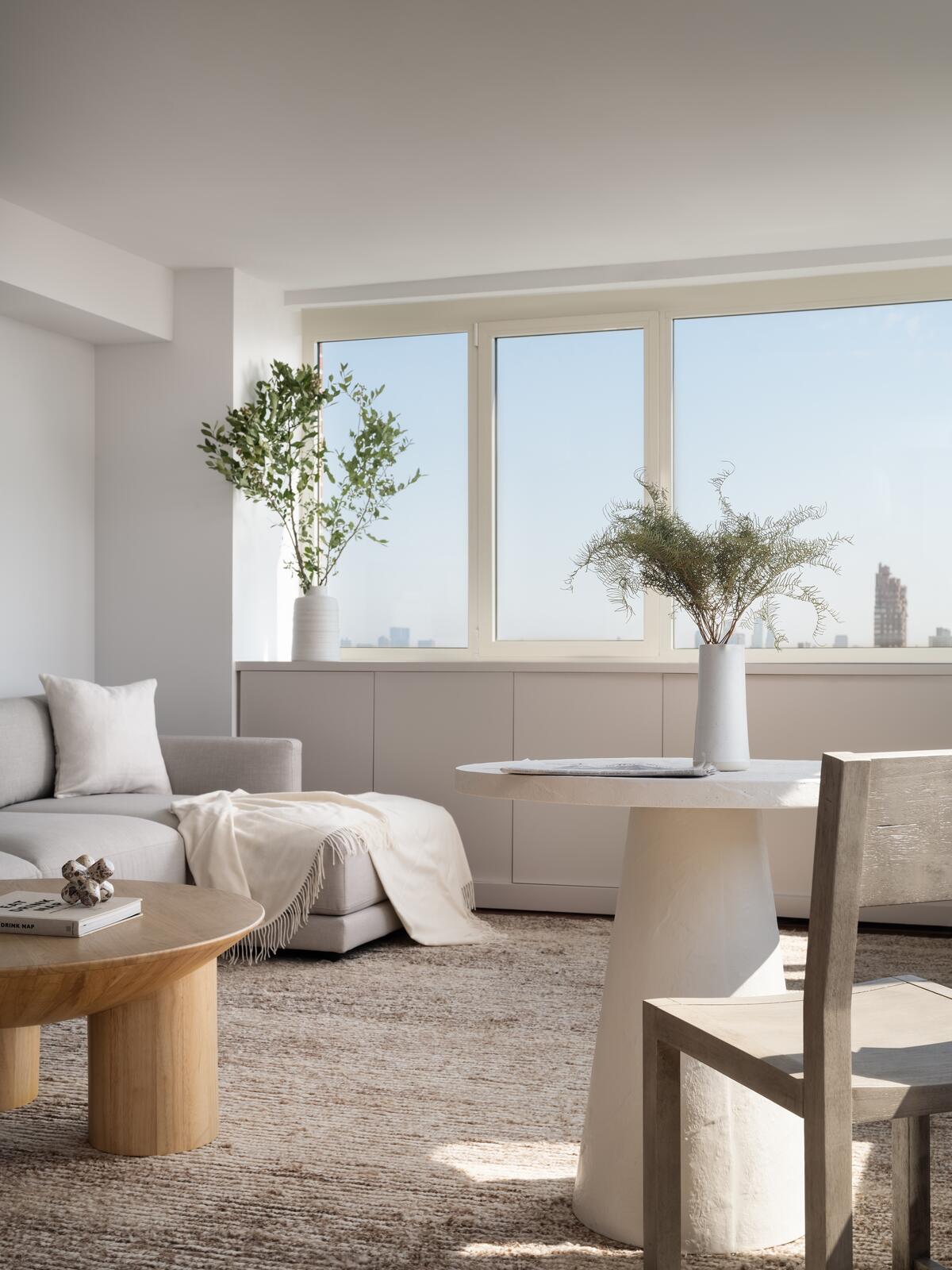
“This year will continue to bring a focus on personal well-being and the importance of taking care of ourselves, which will lead to better health, better business, more overall happiness and less stress for designers. That will then help us serve our clients more powerfully, resulting in the creation of the best spaces and experiences for them. It’s a win-win.” —Gala Magriñá, designer, New York
“Climate considerations remain a focal point of conversations within the industry and society at large—for good reason. It’s essential that we implement solutions to make progress toward a healthier planet. In 2024, design discussions will explore how we can integrate more organic materials, upcycled textiles, botanical and vegetable-dyed fabrics and leathers, FSC-certified woods, recycled glass and plastic, and ‘one-time’ products like vintage rugs and original artwork. How can we encourage our craftspeople and other small communities to support local economies alongside our work to support ecosystems? I’m eager to see the new ways regenerative materials and eco-friendly sourcing and design are introduced in the year ahead.” —Adam Dunn, vice president of design, Four Hands, Austin, Texas
“Heading into 2024, we are thrilled about the potential of enhancing health and wellness through natural design [by] crafting environments that radiate tranquility, beauty and a profound sense of peace. We’re deepening our focus on the richness of hand-weaving traditions and sustainable fibers, exploring how they can be innovatively tailored to meet today’s design needs. On this journey, every step toward sustainability and well-being is a step toward a more harmonious way of life.” —Michael Jones, founder and CCO, Hartmann&Forbes, Tualatin, Oregon
“DOPAMINE DECOR” AND DEEP GRATITUDE
“As we enter 2024, you can’t help but feel a sense of pause given the state of affairs in the world. Instead of New Year’s resolutions, I like to apply a single word as my goal to manifest. Last year, it was fruitful, and I was so lucky [to see] a lot of hard work come to life. My word for this year is grateful. I try to remind myself of what we are so fortunate to have in our lives, and I plan to translate this mentality into my furniture designs by creating pieces that unite beauty and comfort in spaces where many memories can be made—spaces that make my clients happy and grateful for every wonderful thing in their lives.” —Nellie Jane Howard Ossi, interior designer, furniture designer for Mr. & Mrs. Howard for Sherrill Furniture, Jacksonville, Florida
“My biggest takeaway in 2023 was to listen more and share more. With that in mind, my word for 2024 is collaboration, and I look to this year with anticipation.” —Jessica Duce, designer, Spring, Texas
“Color will make a comeback in 2024. We’re trending away from minimalism—there is a growing mainstream appreciation for spaces that are rich in story and aesthetic. We’ll see less of the popular neutral palettes and more vibrant, moody tones as people lean into places that feel transportive and convey an experience.” —Alfredo Paredes, designer, New York
“We will always be on the journey of celebrating juxtapositions and crafting beauty. There are collections to come that will make elevated and bespoke designs more vast and available. From coast to coast and internationally, we’ll continue bridging personalization and originality.” —Jeremiah Brent, designer, New York
“2024 feels like a year of tangible hope, of expression, of optimism! In interiors, all three will be heavy themes. So many people are starting to give color, pattern and texture a warm embrace, especially with ‘dopamine decor’ becoming more of a staple than a trend. We’ve had a rough couple of years, and life in general can sometimes get you down, but humans were created to experience joy, and we deserve more of it in our daily lives. Expressing the love we have for ourselves through how we design our homes is the ultimate ode to joy. Similarly, although social media is still a medium to flex a bit (we’ve all done it), I’m starting to see a trend in content whose purpose is to bring joy. Fellow creators are using their platforms to evoke smiles, tell more personal stories, or share something that simply made them happy. In my content, I always aim to educate through design, mixology and fashion—but with a common theme of fun. Cheers to a year of that!” —David Quarles IV, designer, Memphis
